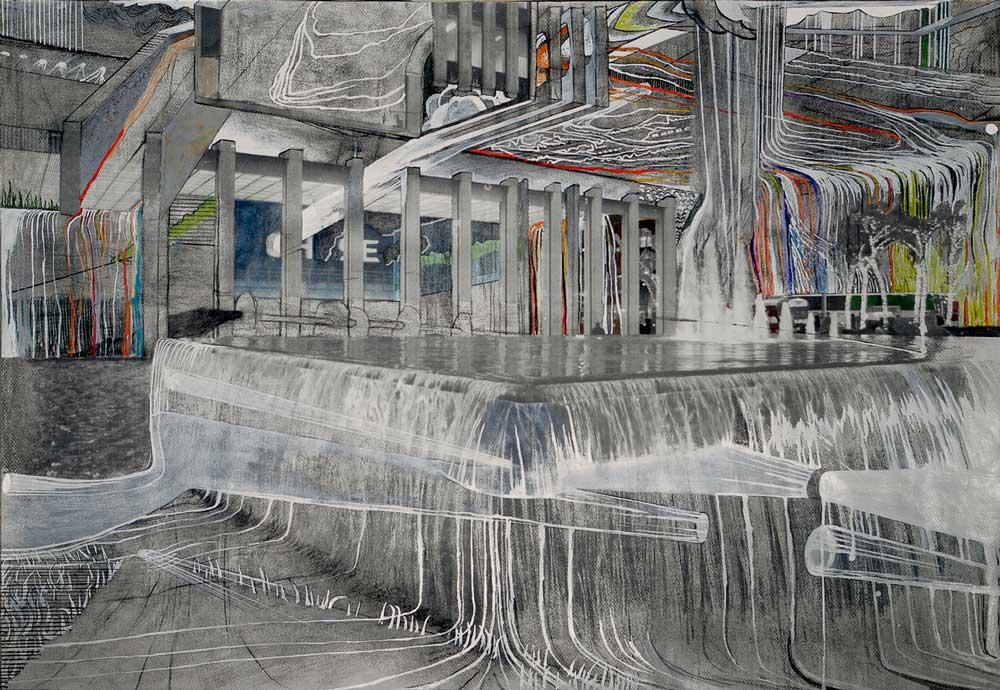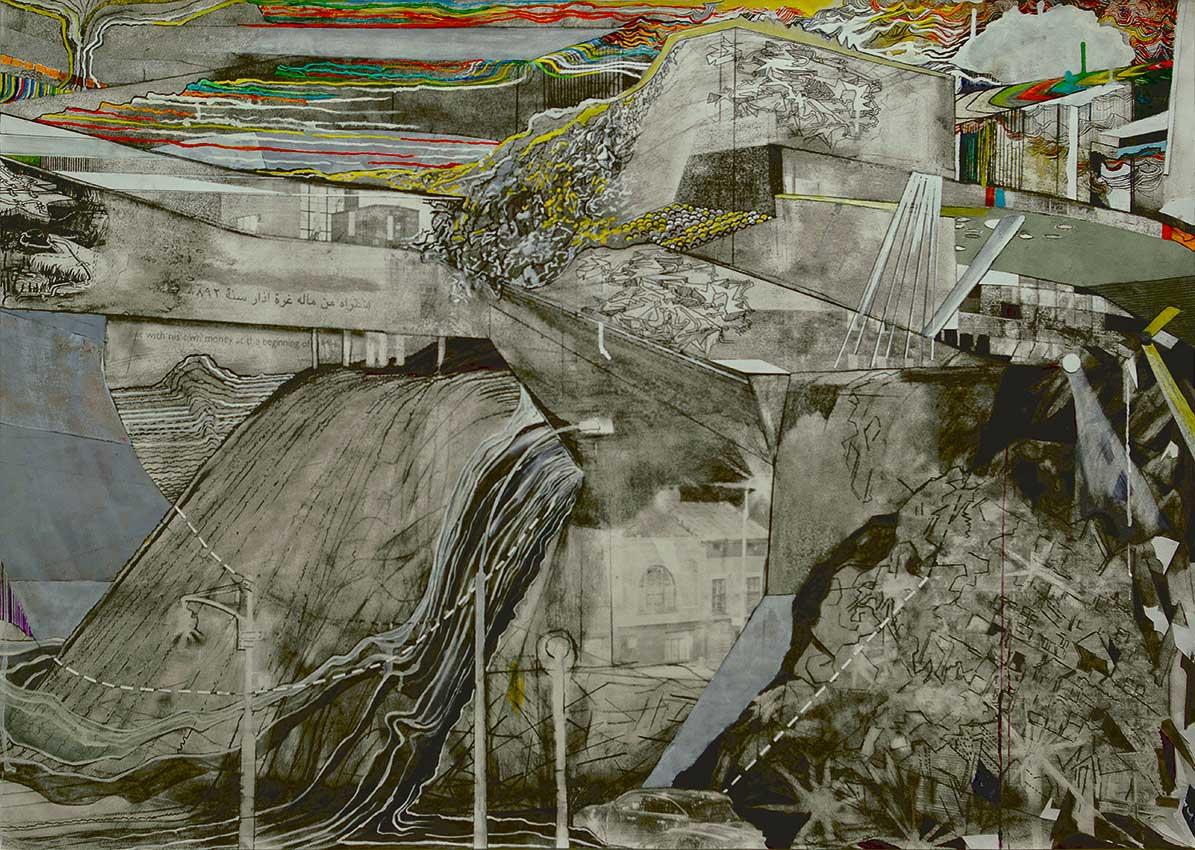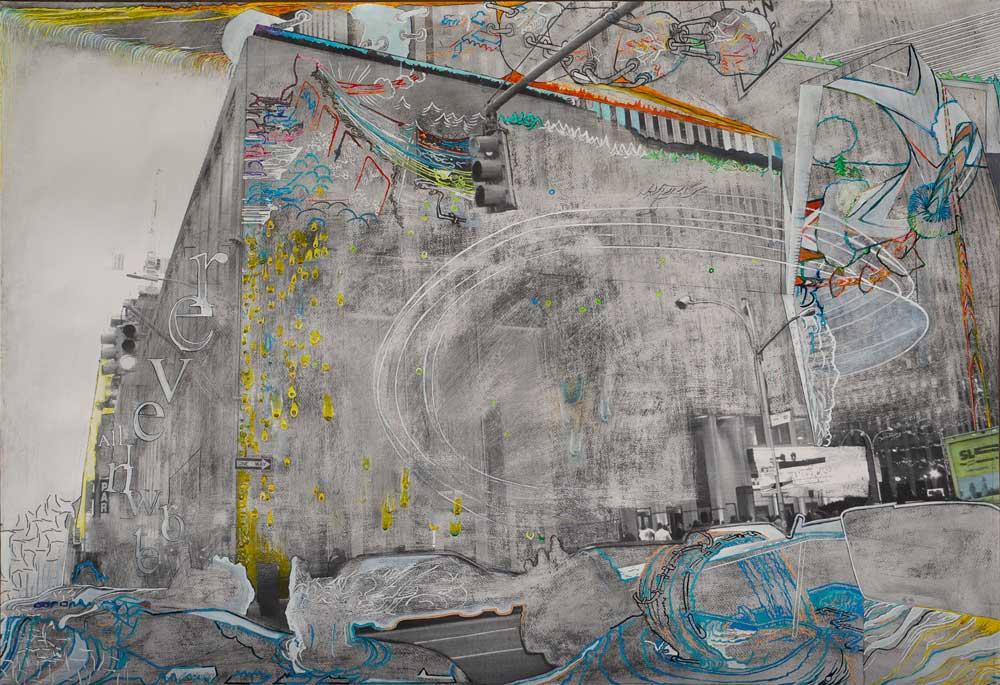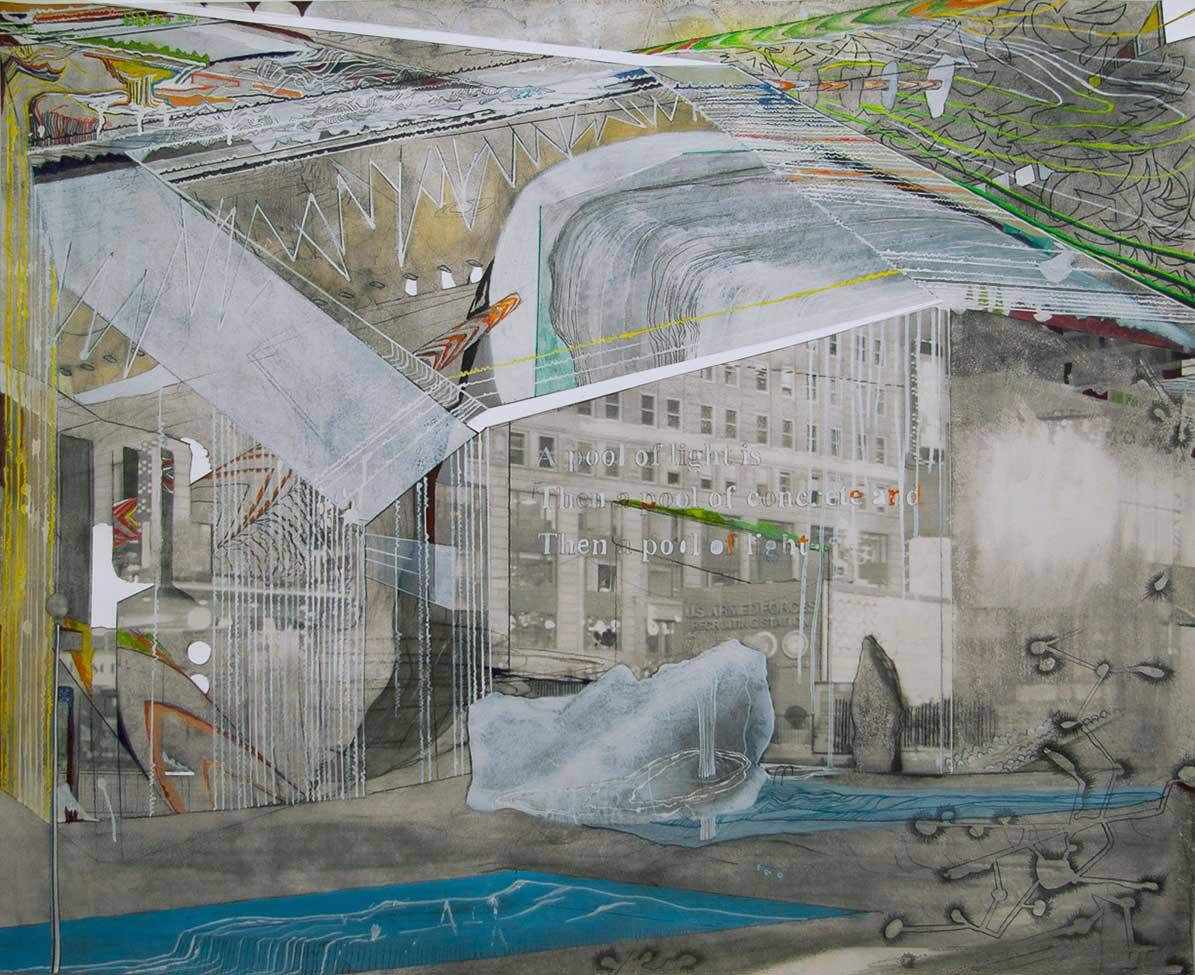How we met the artist:
'While gallery artist Thomas Kilpper lived in London he curated an exhibition that included Alex which is where I saw his wonderfully weird photocopy drawings for the first time. A bleak car park in North London or an industrial backdrop outside Pentonville prison were alienated beyond recognition yet somehow refreshed. Meeting Alex, his friendly demeanor and the seemingly unconnected associations in his thought process, blended in just perfectly. In Alex mind and in his ever-expanding drawing universe these associations make sense. And I feel that deep down, the disruption, chaos and ongoing renewal appeal to us as we get a condensed glimpse of our far too complex world.' - Patrick Heide
About:
Alex Hamilton is an urban explorer who examines our architectural surroundings through the eye of a careful observer. He photographs urban motifs such as buildings, public places, bridges and iconic structures that he then transcribes into his complex and particularly detailed drawings by obliterating many areas and adding other elements instead.
To begin with, Alex photocopies the photographs he takes onto archival watercolour paper, already at this stage manipulating the primary material by including erasure from ongoing constructions of drawings. Then he draws onto the photocopy adding his own observations, energized lines, mini-landscapes and visions of possible future developments. This way the pictured places become vaguely recognizable, architectural landscapes shift between real-life architecture and futuristic utopia. Space is reinvented and reinterpreted as Hamilton creates and abolishes perspectives when detaching and merging fore- and background.
The fact that Hamilton’s interpretations – apart from single hints such as trees and cars – are almost deserted, or if there are any human beings represented they are shadowy and faceless, adds to the utopian atmosphere. In addition, the drawings are mostly held in black and white or darker tones, with stronger colours only creeping into the more recent works.
Another series of works exemplary for Hamilton’s drawing skills are his Wave Drawings, which – as reduced in content – to an even larger extent concentrate on the drawing process itself. The procedure is similar to the ones in his Master or Fourth Plinth series. He makes a large-scale photocopy of a photographed sea surface and then adds another layer of carefully penned but idiosyncratic wave-forms.
By asking us to re-orientate ourselves amidst the ordered chaos of the familiar and the imagined, the imagined takes over the documented.
Alex Hamilton's work is part of several high profile collections such as the Saatchi Collection, the Victoria and Albert Museum, the Baltimore Museum and the Denver Museum of Contemporary Art.
Exhibitions at the gallery:
Down to Zero, 2014 (group show with Prunella Clough, David Connearn, Simón Granell, Andrea Gregson, Bridget Riley, Dieter Roth and Piers Wardle)
and I would see flowers through your eyes, 2013 (two-person show with Christos Venetis)
Under a White Sky, 2012 (solo show with Steven Dickie)
If you melted I would melt myself into you, 2009 (group show with Jürgen von Dückerhoff and Christian Holstad)
Alex Hamilton, Empty and Invisible, 2008 (solo show)
Selected work

Chase Fountain Manhattan 1
Pen & ink, pit pen, gouache, charcoal pencil, airbrush & photocopy on watercolour paper
62.7 x 88.1 cm
2017

The High Line (Manhattan)
Pen & ink, charcoal pencil, airbrush, pit pen, gouache, photocopy, paper cut-outs on Canson watercolour paper
83.7 x 118.7 cm
2016

Fox News Studios 2
Pen, ink, pitt pen, gouache, charcoal pencil, airbrush on photocopy on watercolour paper
80.9 x 117 cm
2017

Times Square display screens 3
Pen, ink, charcoal pencil, airbrush, pit pen, gouache, photocopy, and paper on Canson watercolour paper
87.8 x 109 cm
2016







